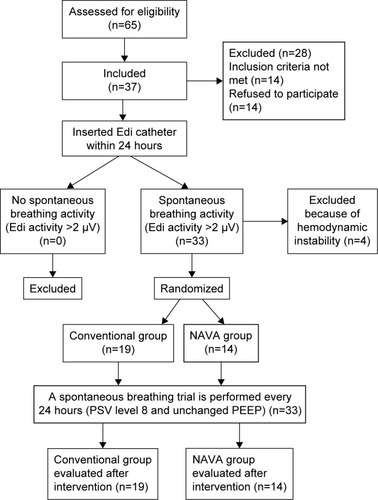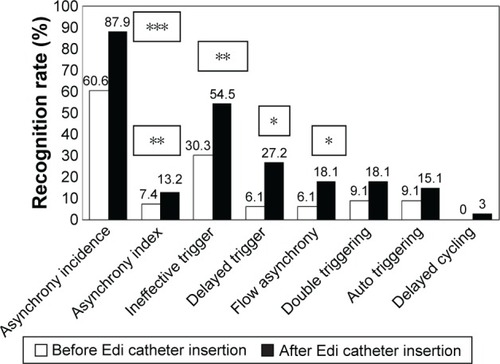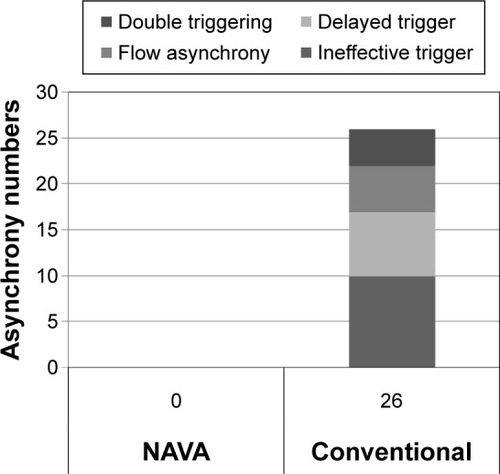Figures & data
Table 1 Patient characteristics
Table 2 Clinical data collection by T0, T1, T2Table Footnotea
Figure 1 Flowchart of registered patients.

Figure 2 Asynchrony recognition rate before and after Edi catheter insertion.
Abbreviation: Edi, diaphragm electrical activity.

Table 3 Asynchrony index between NAVA and control group (n=33)
Table 4 Weaning outcome after NAVA and conventional mode


